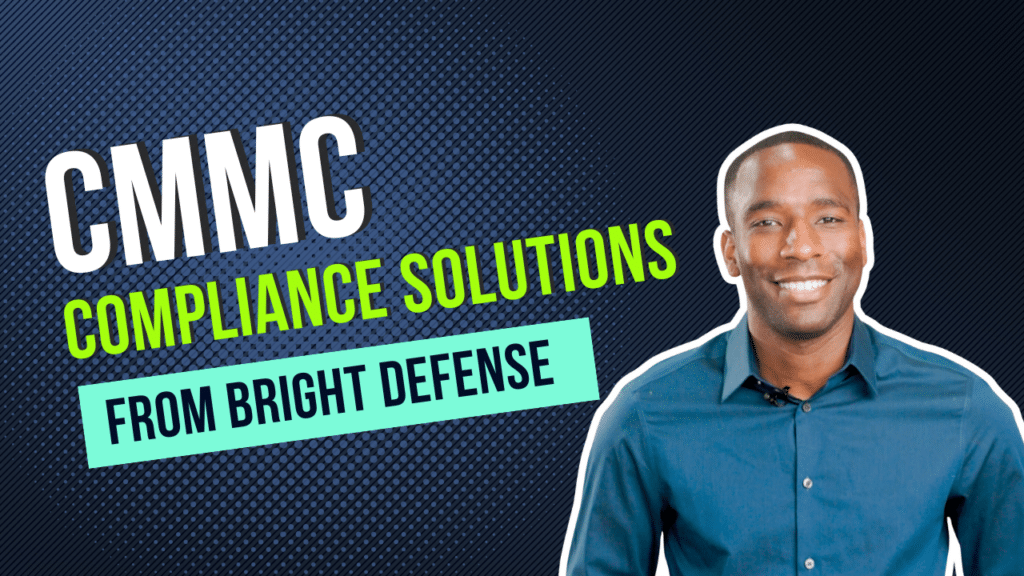
John Minnix
February 26, 2025
StateRAMP Compliance: A Guide for Service Providers
As states increasingly rely on cloud technologies, the need for robust cybersecurity measures has never been more critical. Enter StateRAMP, or the State Risk and Authorization Management Program. StateRAMP is a pioneering initiative designed to standardize and enhance cloud security protocols across state governments.
Inspired by the Federal Risk and Authorization Management Program (FedRAMP), StateRAMP provides a harmonized approach to assessing, authorizing, and continuously monitoring cloud service offerings. The StateRAMP Program Management Office (PMO) plays a crucial role in overseeing the compliance process for cloud service providers. It ensures they meet the government security requirements outlined in NIST 800-53 for achieving StateRAMP compliance.
This article explores the intricacies of StateRAMP. We will explore its objectives and the profound impact it aims to achieve in safeguarding state-level services from emerging cyber threats. Let’s get started!
Understanding StateRAMP Compliance
StateRAMP, inspired by the federal FedRAMP program, is tailored to meet the specific security needs of state and local governments. It aims to ensure that cloud services used by these entities are secure and reliable. By adapting the FedRAMP model to state-specific requirements, StateRAMP helps protect sensitive data managed by state entities. These include public health records and local law enforcement data.
StateRAMP officially launched in January 2021. The framework for StateRAMP is based on the NIST SP 800-53 standards. NIST 800-53 provides a comprehensive set of security controls specifically designed to safeguard information systems. This alignment ensures that StateRAMP upholds a robust level of security, modeled after the stringent requirements outlined in FedRAMP.
Development and Objectives of StateRAMP
State IT leaders, cloud service providers (CSPs), third-party assessors (3PAOs), and policymakers collaboratively develop the program. This broad base of stakeholders helps establish and maintain high-security standards that are flexible enough to address the diverse needs of state governments. StateRAMP’s primary goals include enhancing the security of government cloud services, simplifying compliance processes, and building trust through reliable and uniform security measures.
Path to StateRAMP Authorization
Cloud service providers start their journey to compliance by achieving a ‘StateRAMP Ready’ status. This indicates preliminary compliance with NIST 800-53 standards and StateRAMP-specific security controls. Full authorization follows a thorough third-party assessment confirming adherence to all security standards. Additionally, StateRAMP has introduced ‘Security Snapshots’. Security Snapshots are a tool providing cloud service providers with a preliminary assessment of their compliance status. This aids in the smoother transition to compliance.
Maintaining Compliance
Achieving StateRAMP authorization is the beginning, not the end. CSPs must continuously monitor and reassess their systems to maintain compliance. This involves updating security practices and technologies to address evolving threats, ensuring that safeguards remain effective.
Recent Developments – Alignment with NIST 800-53 Rev. 5
The recent update to incorporate NIST 800-53 Rev. 5 standards. This aims to align StateRAMP more closely with FedRAMP and modernize its security practices. It requires cloud service providers to update their security packages to meet the Rev. 5 requirements by October 1, 2024. The update also includes new criteria for the StateRAMP Security Snapshot. These now incorporate scoring aligned with the MITRE ATT&CK framework.

Who is StateRAMP Important For?
StateRAMP is designed for a specific set of stakeholders within the ecosystem of cloud services and state government operations. Here’s who should consider StateRAMP further:
- Cloud Service Providers (CSPs): CSPs aiming to do business with state governments should seek StateRAMP authorization to offer their services. It not only opens up a significant market but also showcases their commitment to security and reliability. By meeting StateRAMP standards, providers can differentiate themselves from competitors and build trust with government clients.
- State and Local Governments: Agencies within state and local governments that use or plan to use cloud services should prioritize engaging with CSPs that are StateRAMP authorized to ensure the digital solutions they implement meet rigorous security standards. This prioritization helps protect sensitive public data and infrastructure from cyber threats.
- Third-Party Assessors (3PAOs): Third-Party Assessment Organizations (3PAOs) accredited by the American Association for Laboratory Accreditation (A2LA) are crucial for evaluating CSPs against StateRAMP standards. These assessors play a key role in the compliance process, ensuring that CSPs maintain their compliance over time.
- IT Consultants and Advisors: Consultants and advisors specializing in cloud computing, cybersecurity, or government contracting can benefit from understanding StateRAMP as they guide their clients through the procurement and implementation processes. They can assist CSPs in navigating the certification process or help government agencies in selecting compliant cloud solutions.
- Policy Makers and Regulatory Bodies: Individuals and groups involved in shaping policies at the state level should be well-informed about StateRAMP’s requirements and benefits. They can help endorse policies that align with or support the adoption of StateRAMP standards, thus enhancing the overall security posture of their state’s digital resources.

StateRAMP Compliance Checklist for Cloud Service Providers
Achieving StateRAMP compliance involves a series of steps that ensure cloud service providers (CSPs) meet the necessary cybersecurity standards to work with state and local governments. Here is a comprehensive checklist for CSPs aiming to become StateRAMP compliant:
- Understand StateRAMP Requirements: Familiarize yourself with the StateRAMP Policy, which aligns with NIST SP 800-53 security controls. It’s crucial to understand the security requirements outlined in the StateRAMP Policy. They form the foundation for developing a compliant System Security Plan (SSP) and achieving StateRAMP certification.
- Pre-Assessment Preparation: Conduct an internal review of your existing security practices against StateRAMP standards. Identify any gaps in compliance and develop a plan to address them.
- Engage a Third-Party Assessment Organization (3PAO): Select an accredited 3PAO to perform the independent security assessment required for StateRAMP compliance.
- Document Security Controls: Prepare and document all security controls as per StateRAMP guidelines to demonstrate your adherence to the required standards.
- Complete the Security Assessment: Work with your chosen 3PAO to complete the security assessment. Address any findings that may prevent compliance.
- Remediate Identified Gaps: Implement necessary changes and improvements based on the 3PAO’s assessment to ensure all security gaps are closed.
- Submit Compliance Package to StateRAMP PMO: Compile and submit the required documentation, including the security assessment report from the 3PAO, to the StateRAMP Project Management Office (PMO) for review.
- Achieve and Maintain Compliance: Once compliance is confirmed and you are listed as StateRAMP Ready or Authorized, engage in continuous monitoring and regular re-assessment to maintain your compliance status.
- Continuous Improvement: Regularly update your security practices to handle evolving threats and changes in standards to ensure ongoing compliance with StateRAMP requirements.
- Training and Security Awareness: Conduct regular training for your team to ensure they are aware of StateRAMP requirements and the importance of maintaining compliance.

Challenges and Considerations
Achieving and maintaining StateRAMP compliance presents a unique set of challenges and considerations for CSPs and state agencies alike. While the framework significantly enhances the security of cloud services used by state governments, navigating its requirements can be complex. This section will explore the key obstacles that entities need to consider throughout the compliance process.
Navigating Complexity
The adoption of StateRAMP can be complex. It involves a rigorous assessment process and stringent compliance requirements. CSPs may face challenges in understanding and implementing the necessary security controls to meet StateRAMP’s standards. Additionally, smaller providers might struggle with the resources required for compliance. These include the financial and time investments needed to achieve and maintain certification.
Consistency Across States
While StateRAMP provides a standardized framework, the application and enforcement of these standards can vary across different states. This can potentially lead to inconsistencies in the implementation and assessment of security measures. Inconsistencies can pose a challenge for CSPs operating in multiple states and for state governments looking to ensure uniform security practices.
Evolving Cybersecurity Threats
The rapid evolution of cybersecurity threats presents a continuous challenge for StateRAMP and its stakeholders. Keeping the security standards up-to-date with the latest threats and technological advancements is crucial. It requires vigilance and adaptability from all parties involved.
Stakeholder Engagement
Achieving widespread adoption and support for StateRAMP requires buy-in from a broad range of stakeholders, including state governments, CSPs, and 3PAOs. Encouraging these groups to commit to the StateRAMP process involves demonstrating the clear benefits and addressing concerns about the costs or efforts required.

State-Specific Cloud Security Frameworks and Their Integration with StateRAMP
StateRAMP provides a standardized approach to cloud security that many states are integrating into their regulatory frameworks. For example, TX-RAMP in Texas recognizes StateRAMP certification, providing automatic reciprocity. This means that cloud service providers who are certified under StateRAMP are also recognized under TX-RAMP, facilitating their operations across multiple states, including Texas. This relationship simplifies compliance for providers, as they do not need to undergo separate certification processes for each state framework.
Other states have also developed their specific cybersecurity frameworks and regulations that align with or complement StateRAMP standards:
- Arizona has developed its framework known as AZRAMP, which stands for the Arizona Risk and Authorization Management Program. Based on the NIST framework, AZRAMP has been established to vet and monitor the security standards of IT vendors, ensuring they meet the stringent requirements necessary for protecting state data. AZRAMP also recognizes StateRAMP and FedRAMP authorizations, facilitating easier compliance and authorization for vendors already certified under those programs.
- North Carolina has set statewide standards for information technology security which are revised annually by the state’s Chief Information Officer to ensure they meet current security needs.
- Ohio mandates that its chief information officer establish policies and procedures for the security of personal information maintained and destroyed by state agencies.
- Virginia requires every agency and department in the executive branch to secure electronic data and comply with the commonwealth’s information technology security and risk management program.
These examples illustrate a trend towards more structured and formalized IT security frameworks at the state level. They are often designed to either align with or directly utilize the foundations set by programs like StateRAMP. This approach enhances the security posture of state agencies and streamlines the compliance process for cloud service providers operating in multiple jurisdictions.

Conclusion
StateRAMP represents a critical advancement in securing state-level cloud services, providing a comprehensive framework that benefits both providers and governments. Standardizing security assessments and monitoring helps protect sensitive data and enhances the trust that citizens place in their government’s digital services.
However, the success of StateRAMP depends on continuous collaboration, updates, and commitment from all stakeholders involved. As states and CSPs navigate the complexities and challenges of implementation, the overarching goal remains clear: to foster a secure, efficient, and reliable environment for government cloud computing. This commitment to cybersecurity is not just about compliance. It’s about safeguarding the public sector’s future in an increasingly digital world.
Bright Defense Delivers Continuous Compliance Solutions!
If you’re ready to begin your StateRAMP journey, Bright Defense is here to guide you every step of the way. Specializing in continuous compliance with NIST-based frameworks such as StateRAMP, CMMC, and beyond, we offer a comprehensive range of services to meet your needs. Do you need to achieve compliance with multiple frameworks? We also help clients achieve SOC 2, ISO 27001, HIPAA, an more.
Our monthly engagement model integrates compliance automation to enhance efficiency and reduce the costs associated with maintaining compliance. Our offerings extend to gap analysis, Virtual Chief Information Security Officer (vCISO) services, security awareness training, multifactor authentication, mobile device management, vulnerability testing, and more.
Contact Bright Defense today to get started!
Get In Touch



